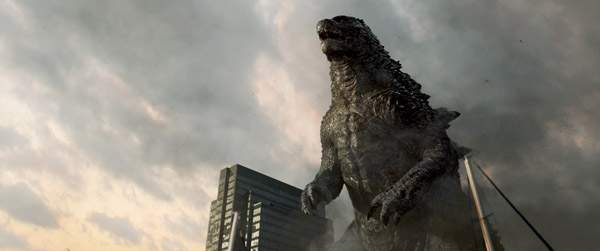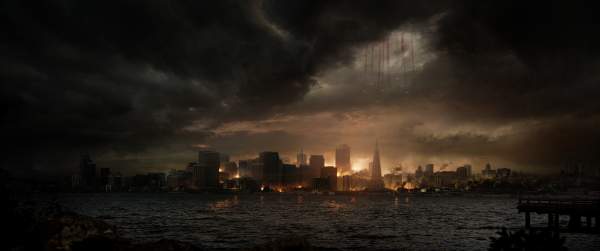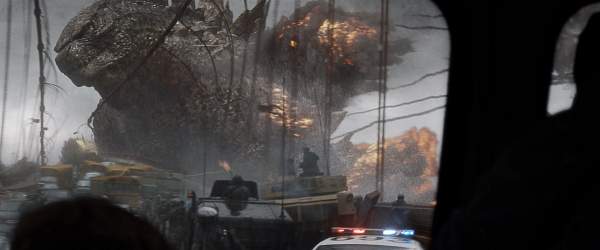What does a compositing supervisor do, how do they fit in with the production?
The compositing supervisor is responsible for the final image so it includes firstly the set up of the full 3D pipeline - colourwise, format-wise, resolution, look-up tables, and how we can optimise the full colour pipeline and then feed all the departments with what they need in terms of the image. So we work closely at the beginning and at editorial, just in terms of ingesting the plates, perfecting the plates, and then importing all the data. When we get it back we’re responsible for putting all the pieces together and then configuring the final image, and the final look.
What’s it like working with a director like Gareth Edwards who has a background in visual effects?
It does make a difference. Gareth was very focused on his director role on this, so it’s not that he comes in like “Oh, I know visual effects, so I know what you guys have to do.” It’s more that he brings an understanding of what we need to have on set and understanding the different steps, which is very useful. He was very great to work with, he was under a lot of pressure because it was a massive movie to direct. He was really focused on his directing and making the best movie he could, but the understanding of visual effects was very helpful.

How do you balance the human scale with a huge creature like Godzilla?
We did some tests at the beginning because he’s such a massive creature, 150 meters tall, comparing animation and human motion capture, slowing down a human to see what feels right. With Gareth it was decided Godzilla would be slow to move in close-up when we actually had humans in the frame, to really have the scale, but on the wider shots we would speed up the animation slightly because otherwise a shot would have to last a minute to see the action. So it was a bit of a cheat, to keep the illusion of his size we have to bend reality, as we always do in visual effects.
Is there any lizard in Godzilla’s movements?
No, there is bear, some of the middle is bat, but not so much lizard. We have some Kimodo Dragons for the scales, but Godzilla is more upright so there is something of a man in the suit, but on the animal side in terms of the posing there’s a lot of bear because they do tend to stand upright. You find a bit more lizard and snakey movements when he swims, but when he stands it’s more bear-like.
With the man in the suit idea - how do you balance past versions of the creature with something new?
That’s all design, Gareth could explain it better (listen here) because he chooses and we produce what he wants, but he wanted to keep the iconic silhouette. There’s a lot of backlighting of the creature, so you want to have a glimpse of it in the lightning strike and then just know who you’re dealing with. He wanted to keep the design, I think there were 28 different Godzilla designs in the Toho movies. We were always joking with the “man in the suit” because in 99% of the movies he is, but it wasn’t “let’s leave room for a man in the suit”. The “man in the suit” was more of a joke, but you do end up, to keep the Toho design, that kind of iconic Godzilla, look at every one.

What was your approach to destroying the city?
It was an issue right at the beginning, just the scale. We had a very nice pre-vis that was pretty accurate in terms of their positioning in San Francisco, so we started by laying down all the cameras on the San Francisco map to have an idea of the scale of their playground, where they’re going to fight - around 80 blocks we’re going to have to destroy. On the other hand there were iconic landmarks that we were not athorised to destroy so we had to avoid them. We cheated, we moved a building we could destroy multiple times. No notices we just moved them around.
Because of the scale we used what we call a two-and-a-half-D approach, which is by rear-projection. We had 40,000 pictures of San Francisco, rooftops and streets, and then doing 3D photography, super-hi-res, we can build a high-resolution photograph that we project onto geometry buildings and then paint destruction onto. As we progress there is more and more destruction - there are the buildings they interact with and the buildings in the background, destroyed in a previous shot.
So there’s a lot of matte painting and then effects on top of destruction, and we use our own destruction software to have all the building interactions and the destruction of buildings, offices and street furniture. So it’s a combination of far-background projection, then two-and-a-half-D (it’s still 3D but with matte painting projection), and then full CG buildings destroyed, then FX, dust elements... it was using every department we could think of to cover the amount of destruction we have.

How is important is the lighting in creating the effect?
We have the pre-vis with Gareth, a great visual reference, and a lot of his intentions are in there. One of the early issues we had with the entire destruction scene is he wanted everything to be dark, because the Muto has the electromagnetic pulse that shuts down everything. We were looking at references of what it would be like, a city without light - it’s pretty pitch black. So then he was introducing those fires, the city on fire, which illuminate the smoke that keeps the light diffuse. Then we had to try to keep everything looking real as much as we can, within a supernatural visual. If it was really real we wouldn’t see as much, so it was a big challenge making sure that everyone sees they’re on the ground in that city and this is Godzilla there, they’re going to be fighting here, but with obviously enough realistic lighting of a city that has no electricity and a few fires here and there.
Are there any hidden effects we might not notice?
One of the sequences we like is the Golden Gate Bridge, with the kids in the bus. We did our pre-vis and that entire scene in the bus is shot on a parking lot over greenscreen, we had a very small section of the Golden Gate Bridge. So the whole set-up of that scene with the people and the rain and walking with all those cars in the traffic jam ... everything is a visual effect. The bridge is completely computer generated, San Francisco Bay, the water, the fog, the rain, the clouds, everything was computer generated in that sequence. We only start thinking about it when the boats fire missiles, then you’re like “well yeah, maybe they didn’t shoot that practically”. But that was the goal, everyone feels that they are on the bridge.
GODZILLA is out on HD Digital download from 13 October, and DVD/Blu-ray from 20 October